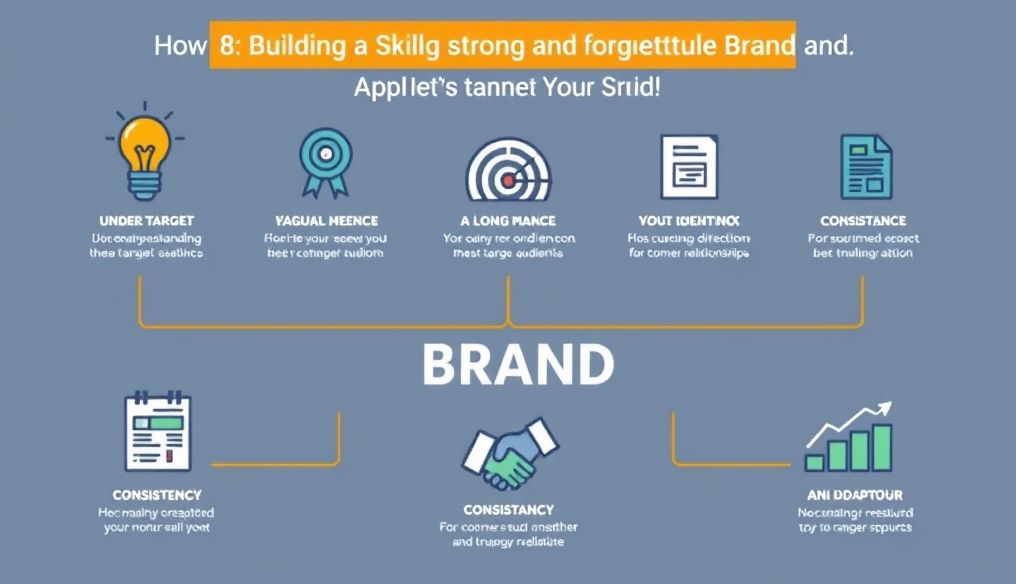How Can You Effectively Market Your Small Business on Social Media?
In today's digital age, social media has become an indispensable tool for small businesses. It offers a unique opportunity to connect with potential customers, build a strong brand, and increase sales at a reasonable cost. However, with so many platforms and strategies, it can be difficult to know where to start. This article provides a comprehensive step-by-step guide to effectively marketing your small business on social media.
Chapter 1: Defining Your Goals and Target Audience
Before starting any marketing campaign, it is essential to clearly define your goals. Do you want to increase brand awareness? Increase traffic to your website? Increase sales? Once you have defined your goals, you can start identifying your target audience. Who are your ideal customers? What are their interests? Which platforms do they use?
Defining SMART Goals
Use the SMART framework to define your goals:
- Specific: Clearly define what you want to achieve.
- Measurable: How will you measure your success?
- Achievable: Is your goal realistic?
- Relevant: Does your goal align with your business objectives?
- Time-bound: When do you want to achieve your goal?
Analyzing Your Target Audience
Use audience analysis tools available on social media platforms, such as Facebook Insights and Twitter Analytics, to get accurate information about your audience. You can also conduct surveys or interviews with your existing customers.
Chapter 2: Choosing the Right Platforms
Not all social media platforms are suitable for every business. Choose the platforms that your target audience primarily uses. For example, if you are targeting young people, TikTok and Instagram may be good choices. If you are targeting professionals, LinkedIn may be more effective.
Overview of Major Platforms
- Facebook: A broad platform suitable for a variety of businesses.
- Instagram: A visual platform ideal for products and services that can be displayed attractively.
- Twitter: A fast-paced platform suitable for news, updates, and customer interaction.
- LinkedIn: A professional platform ideal for connecting with other businesses and job seekers.
- TikTok: A short-form video platform suitable for reaching a young audience.
- Pinterest: A platform for discovering ideas and inspiration, ideal for image-based products.
Chapter 3: Creating Engaging and Valuable Content
Content is king. To succeed on social media, you must create engaging and valuable content that interests your audience. Your content should be original, helpful, entertaining, and consistent with your brand.
Different Types of Content
- Images and Videos: Visual content is very popular on social media.
- Articles and Blogs: Share valuable information and helpful tips with your audience.
- Infographics: Present data and information in a visual and easy-to-understand way.
- Live Streaming: Interact with your audience in real-time and answer their questions.
- Contests and Giveaways: Encourage your audience to engage with your brand.
- User Stories: Share stories of your customers and how they have benefited from your products or services.
Tips for Creating Effective Content
- Use high-quality images and videos.
- Write catchy headlines that grab attention.
- Use simple and easy-to-understand language.
- Add a Call to Action at the end of each post.
- Post regularly to keep your audience engaged.
Chapter 4: Engaging with Your Audience
Social media is a two-way street. It is not enough to just post content; you must also engage with your audience. Respond to comments and messages, participate in conversations, and show that you care about your customers' opinions.
How to Engage Effectively
- Be responsive: Respond to comments and messages as quickly as possible.
- Be friendly and polite: Treat your audience with respect.
- Participate in relevant conversations: Show your expertise in your field.
- Ask for your customers' opinions: Ask them about your products or services and how you can improve them.
Chapter 5: Using Paid Advertising
Paid advertising on social media can help you reach a wider audience and increase brand awareness. Target your ads based on your audience's interests and demographic behaviors.
Types of Paid Advertising
- Facebook and Instagram Ads: Allow you to reach a wide audience based on various criteria.
- Twitter Ads: Help you promote your tweets and reach an audience interested in specific topics.
- LinkedIn Ads: Ideal for reaching professionals and other businesses.
Tips for Creating Effective Ads
- Clearly define your target audience.
- Use attractive images and videos.
- Write compelling ad copy.
- Add a clear Call to Action.
- Monitor the performance of your ads and adjust them as needed.
Chapter 6: Analyzing Results and Measuring Performance
It is essential to track the results of your social media marketing campaigns to see what is working and what is not. Use the analytics tools available on different platforms to measure the performance of your posts and ads.
Key Performance Metrics
- Reach: The number of people who have seen your content.
- Engagement: The number of likes, comments, and shares.
- Clicks: The number of people who clicked on the links in your posts.
- Conversions: The number of people who took a specific action, such as buying a product or subscribing to a mailing list.
- Return on Investment (ROI): Measuring the profit you have made from your marketing campaigns.
Analytics Tools
- Facebook Insights
- Twitter Analytics
- LinkedIn Analytics
- Google Analytics
Chapter 7: Using Social Media Management Tools
Social media management tools can help you save time and effort by scheduling posts, tracking mentions of your brand, and analyzing performance.
Examples of Social Media Management Tools
- Hootsuite
- Buffer
- Sprout Social
Chapter 8: Additional Tips for Social Media Marketing Success
- Be consistent: Post regularly to keep your audience engaged.
- Be authentic: Be yourself and avoid pretending.
- Be patient: Building a strong brand takes time and effort.
- Don't be afraid to experiment: Try different strategies to see what works best.
- Stay up-to-date: Social media is constantly changing, so stay informed about the latest trends.
By following these tips and strategies, you can effectively market your small business on social media and achieve your marketing goals.




